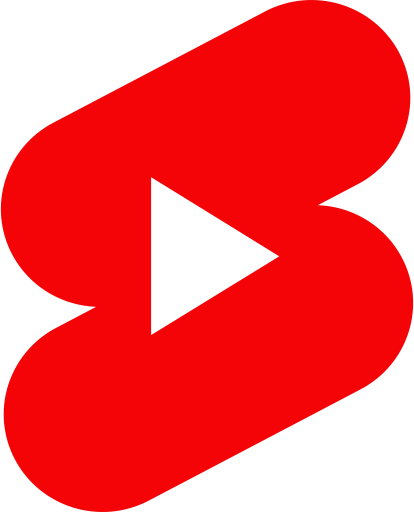Decentralized Social Media: What It Is and What It Means
In recent years, concerns about privacy, data security, censorship, and the monopolistic control of large social media platforms have sparked a growing interest in decentralized alternatives. Unlike traditional platforms like Facebook or Twitter, which are controlled by central entities, decentralized social media operates on networks that distribute power and control among users, often using blockchain technology.
The shift promises to empower individuals, enhance privacy, and provide more transparent and censorship-resistant spaces for online interaction. We’ll explore what decentralized social media is, how it works, and what it means for users, businesses, and the future of online interaction.
What Is Decentralized Social Media?
Decentralized social media refers to social media platforms that are not controlled by a central authority or single company. Instead, these platforms operate on decentralized networks or blockchain technology, distributing control across multiple nodes or users. This structure ensures that no single party holds total control over the platform, its data, or its content.
In simpler terms, decentralized social media empowers users to control their own content, data, and interactions, while also potentially removing intermediaries (such as platform owners) that might restrict speech or access.
Want to start fresh in 2025? Here are ten social media lessons from 2024 to prevent you from making the same mistakes.
How Does Decentralized Social Media Work?
The core concept behind decentralized social media is the decentralization of control. This means that rather than all data, content, and communications flowing through central servers owned by a corporation, they are distributed across a network of computers (or nodes). In a decentralized system:
- No Central Authority: There is no single organization in control of the platform. Instead, each node (or user) has a say in how the platform operates.
- Blockchain Technology: Some decentralized social media platforms leverage blockchain technology, allowing users to control their own data through encrypted, peer-to-peer systems. Blockchain also ensures that content cannot be easily altered or censored, providing a transparent and immutable record of interactions.
- User Empowerment: Users have the ability to own their data, meaning they can choose to monetize it or share it in ways that best suit them, unlike centralized platforms where the platform itself controls the data and monetizes it.
Wary of the TikTok ban? Here are 7 practical tips for making the big shift to Instagram.
Key Examples of Decentralized Social Media Platforms
Mastodon
One of the most well-known decentralized alternatives to Twitter, Mastodon operates on a federated model. It allows anyone to create their own server (or “instance”), while still being part of a larger network. Each instance has its own rules and moderation policies, but users can interact across instances. Mastodon emphasizes privacy, freedom of expression, and community governance.

Diaspora
A decentralized social network built on open-source software, Diaspora emphasizes user privacy and control over data. It’s also federated, meaning there are many independently operated servers (called pods) that are all part of the same network.

Steemit
Built on blockchain technology, Steemit is a decentralized platform where users can post content and get rewarded with cryptocurrency. It provides an economic incentive to users based on the value and engagement of their posts.

Peertube
Peertube is a decentralized video hosting platform. It allows users to host their video servers while interacting with others on the platform. It provides a censorship-resistant alternative to platforms like YouTube.

Minds
This platform bills itself as a free speech alternative to Facebook. Minds uses blockchain technology to reward users with cryptocurrency for their contributions, whether that’s content creation or engagement with the platform.
Benefits of Decentralized Social Media
- Privacy and Control: Users have more control over their personal data, limiting the chances of misuse. They can choose whether or not to share certain information, and they are not subject to the data mining practices of large corporations.
- Censorship Resistance: Centralized platforms often engage in content moderation, sometimes leading to the removal of posts that may be seen as controversial or harmful. In decentralized platforms, there’s a much greater degree of freedom of expression, as no single entity can control what is shared.
- Transparency: Many decentralized social media platforms use blockchain to create transparent and verifiable records of activity. This makes it harder for content to be tampered with or erased without a trace.
- User Ownership and Monetization: Instead of the platform taking control of monetization, decentralized platforms often allow users to earn directly from their content. This can include cryptocurrency-based rewards or other incentives tied to user engagement.
- Reduced Risk of Data Breaches: Since user data is distributed across multiple nodes rather than stored in a centralized database, it is more difficult for hackers to compromise large-scale personal data. A breach on a decentralized network may only affect a small subset of the network, rather than millions of users.
Challenges and Drawbacks
While decentralized social media offers a number of advantages, there are also significant challenges:
- User Adoption: Centralized platforms are still dominant, and users may find it difficult to transition to decentralized platforms, especially if their network of friends, followers, or content creators is not on the new platform. Mass adoption is a significant hurdle.
- Moderation Challenges: Without a centralized authority, content moderation becomes complex. While some platforms rely on community-driven moderation, it may lead to inconsistencies or difficulties in enforcing rules fairly.
- Technical Barriers: Many decentralized platforms require users to have a certain level of technical knowledge to operate, set up, and maintain accounts or servers. This can limit accessibility for non-technical users.
- Monetization: While users have more control over their data, many decentralized platforms still struggle to develop robust monetization models. Without a clear revenue model, these platforms may face financial sustainability challenges.
- Network Effect: Social media thrives on network effects— the more people use it, the more valuable it becomes. Decentralized platforms are still growing, and they need to build strong user bases to compete with the established giants.
The Future of Decentralized Social Media
Despite the challenges, decentralized social media is gaining momentum. It is estimated that global decentralized social network demand is likely to rise at a CAGR of 23.6% in the coming years, especially as users become more concerned about privacy and data security.
Decentralized platforms may not completely replace centralized ones in terms of user numbers, but they provide an appealing option for those who prioritize privacy, transparency, and freedom of speech. As the technology evolves and more people adopt these platforms, we’re likely to see a shift toward greater control and distribution in social media.
 TikTok,
TikTok, Reels, and
Reels, and Shorts
Shorts